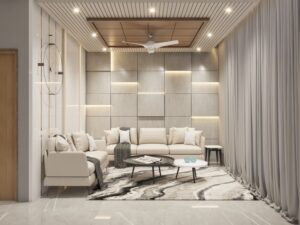Pursuing a professional course in interior design after completing the 12th grade can set you on a path toward a rewarding career in creating functional and aesthetically pleasing interior spaces. Here are some options for courses and educational paths you can consider:
Duration of Interior Design Programs
- Bachelor’s Degree Programs
- Bachelor of Fine Arts (BFA) in Interior Design: 4 years
- Bachelor of Design (B.Des) in Interior Design: 4 years
- Bachelor of Science (B.Sc) in Interior Design: 3-4 years
- Bachelor of Interior Design (BID): 4 years
- Diploma in Interior Design: 1-2 years
- Advanced Diploma in Interior Design: 2 years
- Certificate Courses in Interior Design: 6 months to 1 year
- Integrated Programs
Some institutions offer integrated programs that combine a bachelor’s degree with a diploma or certification in interior design.
Admission Process
- Eligibility: Typically, you need to have completed 10+2 (any stream) from a recognized board.
- Entrance Exams: Some institutes conduct entrance exams.
- Portfolio: A portfolio showcasing your creativity and design skills can be crucial, especially for reputed institutions.
- Interview: Some institutions may also conduct personal interviews as part of the selection process.
Skills Required
- Creativity and Imagination
- Attention to Detail
- Technical Drawing Skills
- Knowledge of Design Trends
- Communication Skills
- Project Management
Career Prospects
- Residential Interior Designer
- Commercial Interior Designer
- Furniture Designer
- Exhibition Designer
- Lighting Designer
- Set Designer for Film/TV
- Sustainable Design Consultant
Integrated Programs
- Integrated Programs: 5 years (combining a bachelor’s degree with a diploma or certification)
Specialized Courses
- Furniture Design: 6 months to 1 year
- Lighting Design: 6 months to 1 year
- Set Design: 6 months to 1 year
- Space Planning: 6 months to 1 year
- Sustainable Design: 6 months to 1 year
Scope of an Interior Designer
Interior designers work in various sectors, providing numerous opportunities for specialization and career growth:
- Residential Projects: Designing interiors for homes, apartments, and luxury residences.
- Commercial Projects: Designing spaces for offices, retail stores, restaurants, hotels, and more.
- Institutional Projects: Working on spaces like schools, universities, hospitals, and government buildings.
- Exhibition Design: Creating temporary setups for exhibitions, trade shows, and galleries.
- Furniture Design: Designing furniture pieces and working with manufacturers.
- Lighting Design: Specializing in the aesthetic and functional use of lighting in interior spaces.
- Set Design: Designing sets for television, film, theater, and events.
- Sustainable Design: Focusing on eco-friendly and sustainable design practices.
- Freelancing and Consultancy: Offering design services independently or as a consultant.
Growth in the Field Over the Next 10 Years
Current Trends
- Sustainability: Increasing demand for eco-friendly and sustainable design practices.
- Smart Homes: Integration of technology and smart home systems.
- Health and Wellness: Growing focus on designing spaces that enhance well-being.
- Personalization: Customization and personalization of interior spaces.
- Remote Work: Rising need for home office designs due to remote work trends.
Projected Growth
- Employment Growth: The interior design industry is expected to see a steady growth rate of around 4-5% per year globally, according to various industry reports.
- Technological Advancements: Use of virtual reality (VR) and augmented reality (AR) in design processes is increasing.
- Market Expansion: Expansion of markets in developing countries, with more people investing in interior design services.
Factors Contributing to Growth
- Urbanization: Rapid urbanization and growth of the real estate sector.
- Lifestyle Changes: Increasing demand for aesthetically pleasing and functional living and working spaces.
- Economic Growth: Higher disposable incomes leading to more investments in interior design.
- Awareness: Greater awareness and appreciation of interior design as a profession.
Choosing a career in interior design can be a fulfilling and dynamic decision, offering a blend of creativity, practicality, and the opportunity to make a tangible impact on people’s lives. Here are some compelling reasons why you should consider pursuing a course in interior design:
- Creativity and Innovation
- Expression of Creativity: Interior design allows you to express your artistic and creative talents through the creation of beautiful and functional spaces.
- Innovative Solutions: The field constantly evolves, requiring innovative solutions to meet clients’ needs and stay ahead of trends.
- Diverse Career Opportunities
- Wide Range of Specializations: From residential to commercial design, set design to furniture design, the possibilities are extensive.
- Freelancing and Entrepreneurship: Many interior designers choose to start their own businesses or work as freelancers, offering flexibility and control over their careers.
- Impact on Quality of Life
- Enhancing Living and Working Environments: Good design improves the quality of life by creating spaces that are aesthetically pleasing and functional.
- Health and Well-being: Design choices can significantly affect mental and physical well-being, contributing to healthier lifestyles.
- Growing Industry
- Increased Demand: With urbanization and the growth of the real estate market, the demand for skilled interior designers is rising.
- Technological Advancements: The integration of technology in interior design, such as VR and AR, opens up new possibilities and makes the field more exciting.
- Personal and Professional Growth
- Continuous Learning: The field offers continuous learning opportunities through evolving trends, technologies, and materials.
- Problem-Solving Skills: You will develop strong problem-solving skills as you create designs that balance aesthetics with functionality.
- Financial Rewards
- Competitive Salaries: Experienced interior designers can earn competitive salaries, and successful freelancers or business owners can achieve significant financial rewards.
- Diverse Income Streams: Opportunities for income can come from various projects, including consulting, designing, and even teaching.
- Global Opportunities
- Work Anywhere: Interior design skills are transferable globally, allowing you to work in different countries and cultural contexts.
- International Recognition: Many prestigious design firms and projects offer opportunities for international recognition and collaboration.
- Sustainability and Social Impact
- Eco-Friendly Designs: Growing emphasis on sustainability means you can contribute to environmentally friendly practices and designs.
- Community Projects: You can work on projects that benefit communities, such as affordable housing, educational facilities, and public spaces.
- Job Satisfaction
- Client Interaction: Working closely with clients to bring their visions to life can be deeply satisfying.
- Visible Results: Seeing a project go from concept to completion provides a strong sense of accomplishment.
Conclusion
The field of interior design is poised for significant growth and transformation over the next decade. With advances in technology, changing lifestyle preferences, and a strong focus on sustainability, interior designers will find numerous opportunities to innovate and expand their careers. Pursuing a professional course after 12th grade can provide a strong foundation and open doors to a variety of specializations and career paths in this dynamic field.

Anil Kumar (Founder Director “Neil interior designers)



